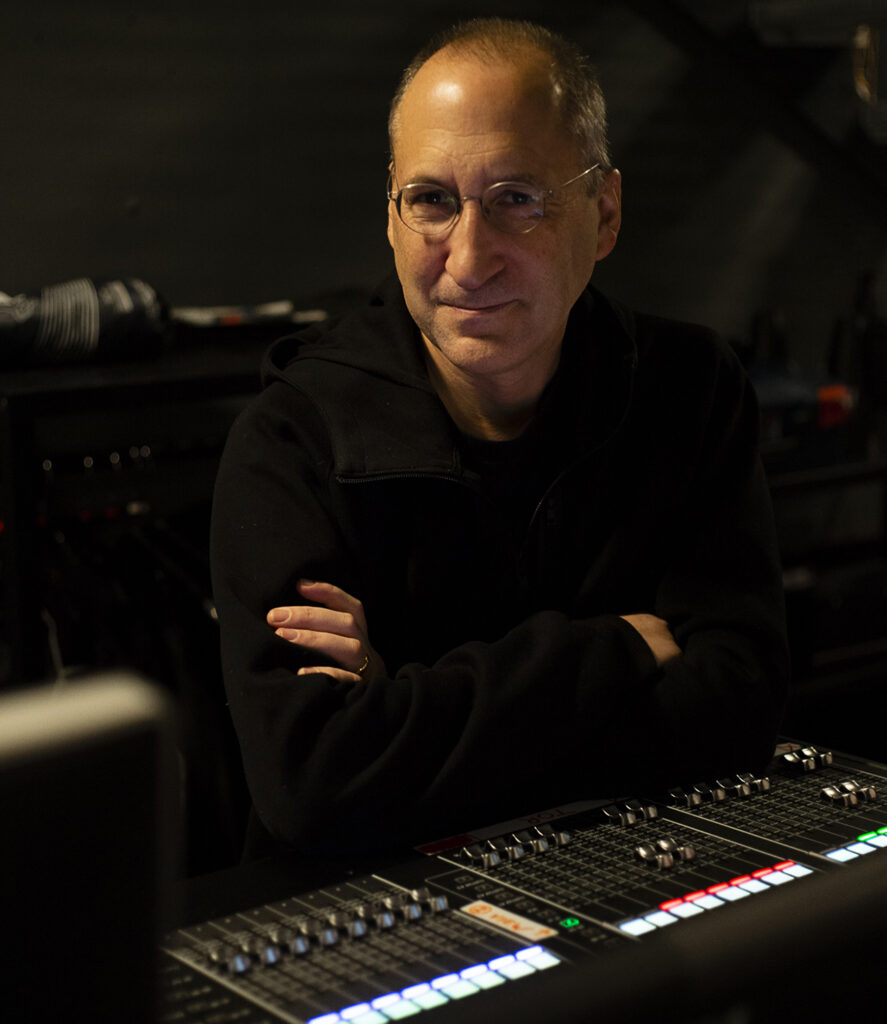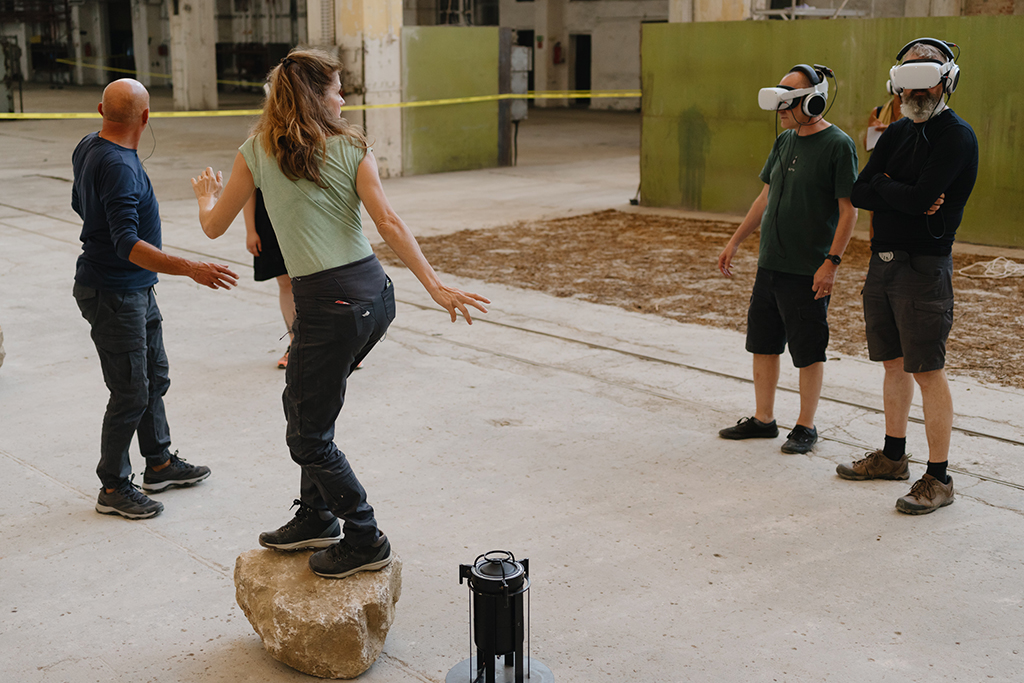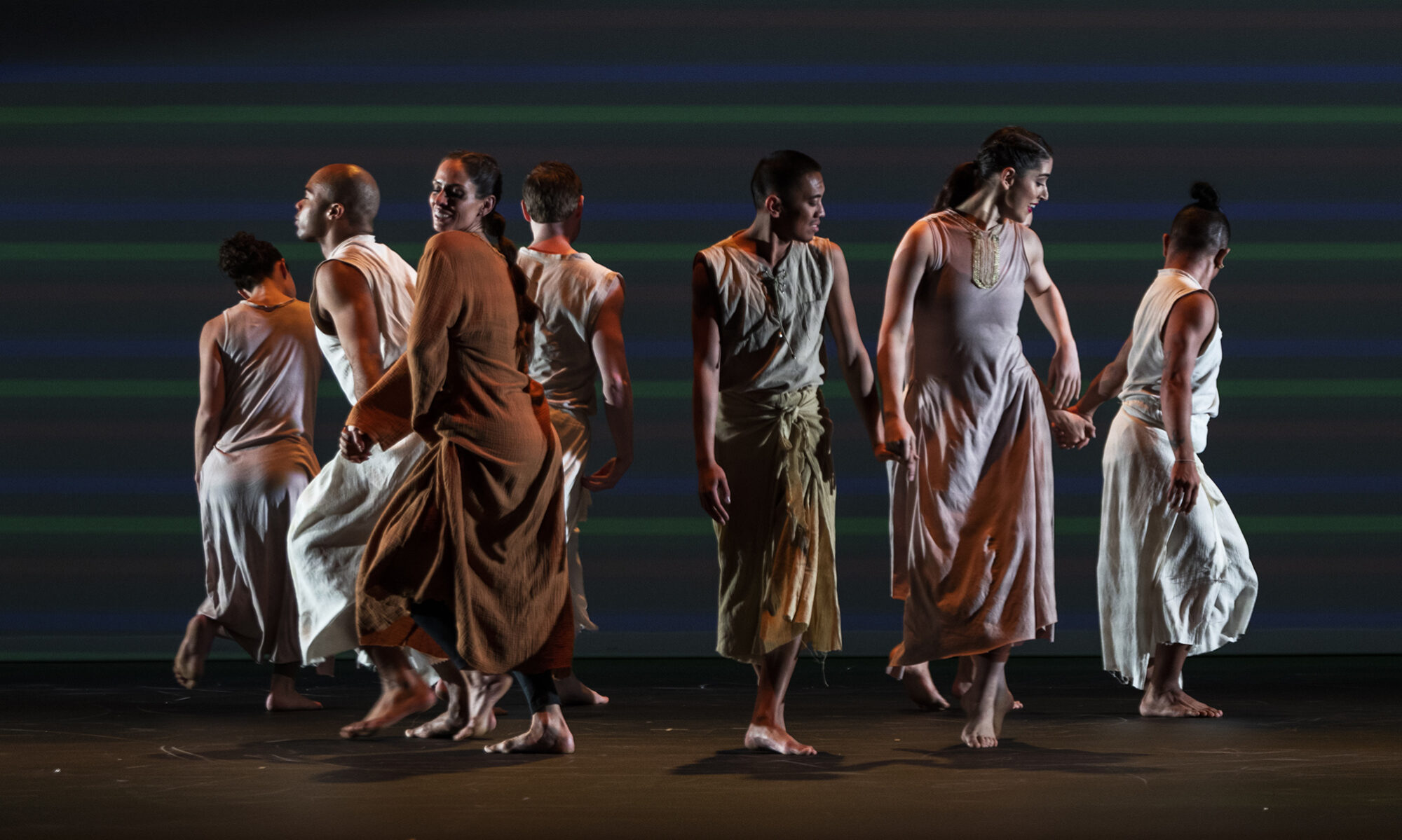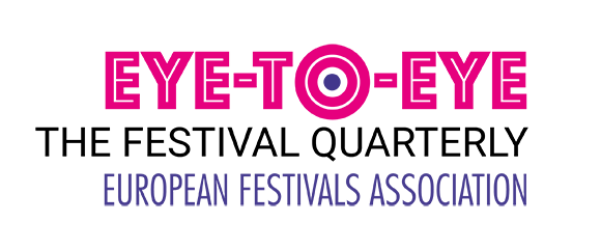Theatre meets Extended Reality to question Climate Change

Chris Salter is Professor of Immersive Arts and Director of the Immersive Arts Space at the Zurich University of the Arts (ZHdK). He is also Professor Emeritus, Design and Computation Arts, at Concordia University in Montreal and former Co-Director (between 2014-2022) of the Hexagram network for research-creation in arts, cultures and technology in Montreal and Co-Founder of the Milieux Institute at Concordia. His artistic work has been seen all over the world at such venues as the Venice Architecture Biennale, Barbican Centre, Berliner Festspiele, Wiener Festwochen, ZKM, Vitra Design Museum, Kunstfest Weimar, Lille 3000, Musée d’art Contemporain, Muffathalle, EXIT Festival and Place des Arts-Montreal, among many others. He is the author of Entangled: Technology and the Transformation of Performance (2010), Alien Agency: Experimental Encounters with Art in the Making (2015), and Sensing Machines (2022), all from MIT Press.
From the 6 to 9 July 2023, the XR Performance/Installation titled Animate and directed by Chris Salter will be premiered in Italy, in the Campania Region, as part of the Campania Teatro Festival directed by Ruggero Cappuccio, following its debut at the Kunstfest Weimar in August 2022. This innovative work, where theatre meets new technologies, will be set in the Old Tobacco Factory near Paestum (Salerno) bringing crucial present day issues to the attention of the audience. First of all, climate change.
When did the idea of setting up Animate and using Extended Reality pop into your mind?
It was around 2019 that my creative producer Remco Schuurbiers, who is one of the CTM co-directors and co-founders of the DISK agency in Berlin, and I were talking about the next project. I wanted to continue the work on “wearable sensing” that we had started in Canada and that resulted in the sensory performative environment Haptic Field, which was shown at the Berliner Festspiele’s Immersion programme at the Gropius Bau in Berlin in 2017, the Wiener Festwochen and at CAC in Shanghai. We started discussing the idea of creating a performance that would involve only worn technologies, which would free us up from always needing very large spaces for these projects, which is always difficult for festivals. So we started looking at emerging worn Augmented Reality technologies like Hololens and Magic Leap and other things. But all of these were too expensive and not really usable in live performance settings. At the same time, when we started a dialogue with Rolf Hemke, who at the time became the new artistic director of the Kunstfest Weimar and who was interested in collaborating on a new type of theatre work using VR/AR, he said that we needed to find a strong narrative – that audiences that attend theatre festivals have different expectations than those that go to media art or sound festivals. I was also doing research on climate questions and so naturally, the idea of creating a work about how we relate to the physical environment directly, in our bodies, came together.
Why did you choose to stage the cli-fi novel Animate written by Kate Story? What particularly inspired you about this text compared to others about climate issues?
I started looking for texts that I could use as a starting point – texts that had a strong narrative and political significance but that also would focus on climate issues from a more poetic and less didactic or representational angle. I picked up an anthology of Canadian Climate fiction and read many of the stories but what attracted me to Kate’s work was the strange atmosphere that the story created – it reminded me a bit of the kind of strange, get under your skin atmosphere that’s in Tarkovsky’s films’ Solaris and Stalker. The piece did double duty – it dealt with this doomed love affair which always works as an emotional hook in the context of climate disaster.
In Animate, what is the soul of the earth? And how to preserve it or fight for it, if there is no longer a safe place for the next generations?
In Animate, the soul of the earth is the Tablelands. The Tablelands is a mysterious area in Newfoundland, which is the eastern-most province of Canada – a huge island off the coast. The Tablelands are in Gros Morne National Park where one can directly walk on the mantle of the Earth. Indeed, around 450 million years ago, as Europe and Africa converged with North America, the ancient Lapetus Ocean closed, and a portion of the oceanic crust was thrust onto the eastern edge of the North American continent. Compared to crustal rocks, mantle rocks are enriched in nickel, magnesium, cobalt, iron and chromium. High concentrations of these elements are toxic to most plants. So, the soul of the earth here is literally having human contact with this inner core of the planet. I haven’t yet been there – in fact, we will go in August before showing Animate in Montreal. Perhaps in such an awesome place, it becomes clear why we need to preserve the planet for future generations because one is directly confronted with what is called “deep time” – 450 million years is really a long time. It’s hard for human beings to fathom a human lifetime, let alone hundreds of millions of years. I think this is why for us climate transformation is so abstract – because it works on geological and not anthropological time.
Human & natural worlds are facing urgent catastrophes of environmental and climate change. The story of Animate featuring the characters Daniel and Laurie as climate refugees, is the story of a future that concerns all of us as an awful prophecy?
Yes and no. In fact, the first thing I said to Kate when we started working was that we should set the story in the present. I think she wrote Animate about 8 years ago and since then, especially in Canada at the time, climate change and its effects were no longer future science fiction (as if they were then). Animate ends in a kind of apocalyptic frenzy of the Earth striking back but it’s also kind of beautiful as well – it shows the awesome power of forces of nature that are beyond human experience and human life. As many scientists say, the earth will keep going – it’s the human species whose days may be numbered if we don’t radically change our capitalist, resource-extractive way of living fast.
How will the newest Virtual, Digital, and Augmented Reality technologies in this performance be connected to the physical experience of the audience?
The real time experience of making theatre with performers and machines or performing live with audio-visual setups is completely different from developing games or fixed media that run in a VR headset. Live performance practice demands a sophisticated attention to timing and rhythm, as well as highly tuned dynamics involving the dynamic flow of time through the expression of rhythms, pulses, changes of tempo and direction. But the software tools one uses for authoring VR and XR experiences (so-called “game engines” like Unity 3D or Unreal Engine) are not built for rapid changes. In contrast to real time audio-video processing environments, where developers and creators can make changes essentially “on the fly,” based on the changing dynamics of performers and light, sound or image in the ever-shifting context of the performance environment, the sheer amount of time required by the workflow of making changes in software that is used to create these experiences borders on hours.
Could you tell us more about this challenge of combining live performance assets with new technologies? What is the creative potential of this combination?
These softwares make it difficult to adjust to nuanced human timing. At the same time, these devices – so-called “head mounted displays” are still uncomfortable, people still get motion sickness because images are so-close to your eyes and critically, these are really what people in disability studies research call “ableist” technologies. They are designed for some concept of a standard body – so people who have vision or hearing impairments, reduced mobility, or are neuro-diverse can’t really enjoy experiences with them. This is really a shame because talking with disabled people, they see huge potential in using and exploring XR. Work with disability and XR in live immersive experience is a research area that we will start to work on now in my new lab – the Immersive Arts Space at the Zurich University of the Arts – as we just got a large grant from the Swiss National Science Foundation to explore how to “probe XR’s futures.”
So, Art & Technology: theatre as a medium and as the oldest form of performance might embrace this duality over the next few years?
As Brecht said, “theatre must keep up with the times and all of the advances of the times and not lag several thousand miles behind as it does at present” – that was from an interview he did while in exile in 1934! But live performance is anachronistic. It is one of the oldest forms of human expression – going back thousands of years. In this sense, one might think it is completely outdated in a world of machine learning and extended reality and 8K images. Of course, as I wrote in my book Entangled: Technology and the Transformation of Performance, performance contexts (theatre, dance, music, etc) have long used technologies to address critical social-political-aesthetic issues. But the refreshing thing about live performance is that of its “it’s happening now” in front of you (or around you) quality. It’s clear that new technical developments like spatial audio, distributed sensing, AI, and better AR glasses will radically transform the theatre – so we need a new generation of theatre makers who understand what these technologies can do and how they can interact with live bodies in front of audiences. And more importantly, what one wants to say critically with these tools.
In your personal and artistic career, when did you approach new technologies? And how do you keep these two souls together, computer-based art professor and theatre director?
These are two questions but they have the same answer. I was always interested in technology, getting my first synthesizer when I was in high school and using it to make all sorts of weird sounds and textures for high school musicals. And I have been doing theatre ever since I was a kid – probably first in 5th grade. I was very lucky to have amazing artist-mentors at all stages when I was starting my career. In high school, in college for my BA (although I didn’t formally study theatre but instead economics and philosophy) the university I went to (Emory in Atlanta) had a professional theatre on campus and the artistic director then (Geoff Reeves) had been an associate director of Peter Brook’s for 14 years. In grad school at Stanford I studied directing with Carl Weber, who had been an assistant director with Brecht at the Berliner Ensemble in the 1950s, dramatic criticism and computer music with John Chowning, who invented FM synthesis and licensed it to Yamaha, who then built the DX7 digital synthesizer out of it (the best-selling synthesizer of all time). And then later, when I started assisting other directors, I was lucky to work and collaborate with Peter Sellars and especially, Bill Forsythe at the Frankfurt Ballet. All the while I had also pursued a high-end academic education. So, I think these two profiles, of artist/scholar and also research manager, somehow fit together. There is nothing strange about the mix for me – although making art and writing books and doing research in the scientific sense demand different forms of concentration and practices.
This performance comes from a work of international co-operation between Weimar Festival, Canada Institutions, and Campania Teatro Festival (EFA member). What was, according to you, the potential basis for building up an international coproduction?
Well, it has to do with Rolf Hemke (Kunstfest Weimar), who helped forge these different connections. Since I have been working largely in media arts for a long time (although always bringing theatrical and performative methods into these installations), I wanted to go back and make theatre – something I hadn’t really done since the mid 2000s. So, we were looking for different theatre festival partners and Rolf suggested Campania. Thankfully, Brunella Fusco (Fondazione Campania dei Festival) and others really liked the idea and also were kind of amazed at the results that we showed in Weimar. This summer we will also show the piece at MUTEK, probably one of the oldest music/digital arts with sound festivals (I think they are close to 25 years now). So that is a very different audience. I learned this from working with (Bill) Forsythe in the 1990s – he always told me, whatever you make, it has to work across different contexts and audiences. So, we hope we can interest more performance festivals in showing the project.
Are you glad to present Animate in Italy? What do you expect from this upcoming premiere?
Very much so. First, it will be interesting to work with Italian actors on a text written in Canadian English! Second, the space in Paestum where we show the work is a huge Old Tobacco Factory (NEXT Ex tabacchificio SAIM, Borgo di Cafasso) – perfect for a work about climate change. I’m hoping the Italian audience will find the work interesting – the experience of sequencing these different artistic forms – from the past to the future (theatre, then VR and finally, AR/mixed reality) is very compelling. And of course, working in Italy has always the advantage that you will never go hungry during rehearsals and performances!
Watch the video of the performance.
Festival Life creates shared moments of audiences and artists, eye-to-eye


